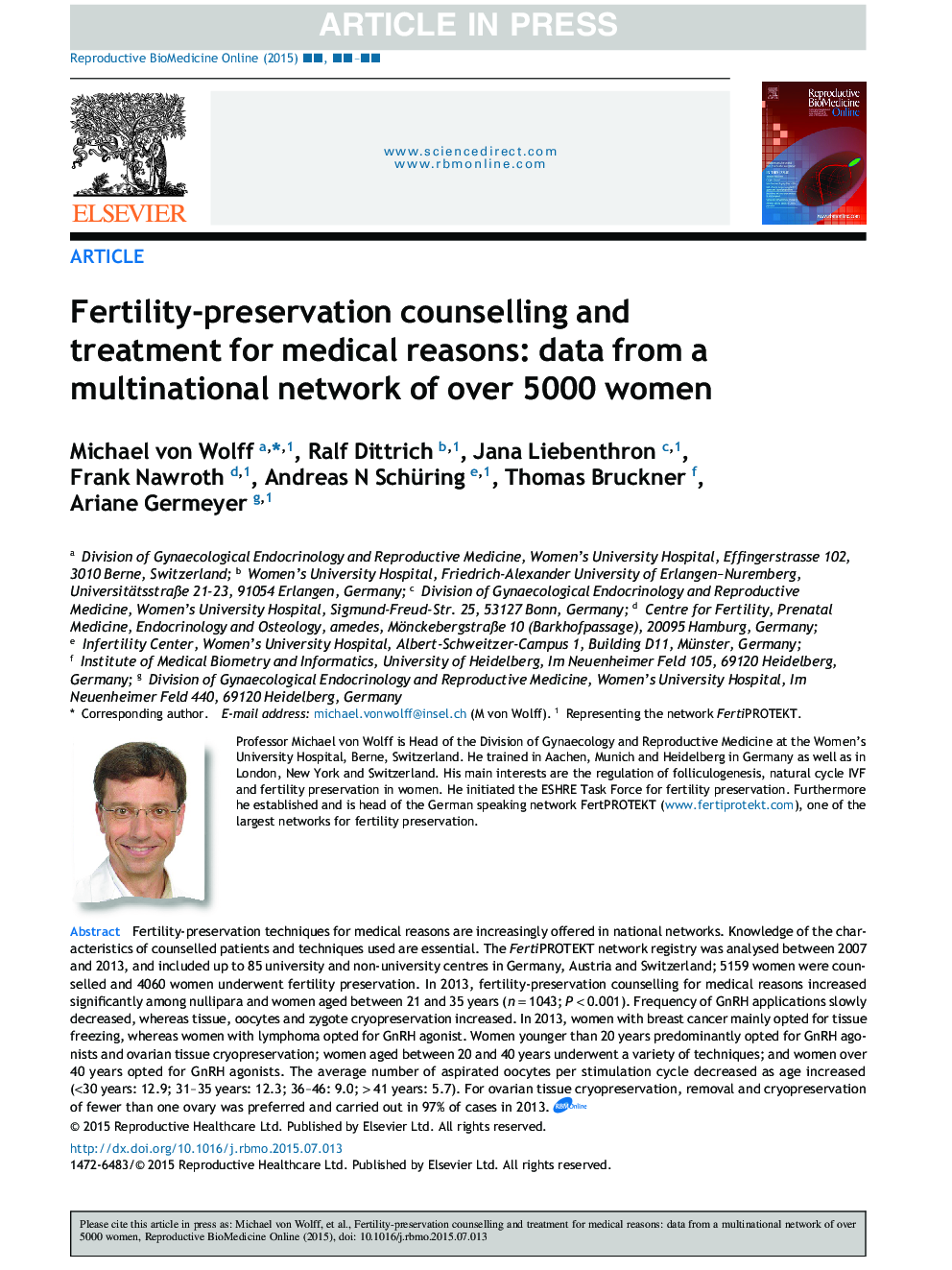| Article ID | Journal | Published Year | Pages | File Type |
|---|---|---|---|---|
| 6188673 | Reproductive BioMedicine Online | 2015 | 8 Pages |
Abstract
Fertility-preservation techniques for medical reasons are increasingly offered in national networks. Knowledge of the characteristics of counselled patients and techniques used are essential. The FertiPROTEKT network registry was analysed between 2007 and 2013, and included up to 85 university and non-university centres in Germany, Austria and Switzerland; 5159 women were counselled and 4060 women underwent fertility preservation. In 2013, fertility-preservation counselling for medical reasons increased significantly among nullipara and women aged between 21 and 35 years (n = 1043; P < 0.001). Frequency of GnRH applications slowly decreased, whereas tissue, oocytes and zygote cryopreservation increased. In 2013, women with breast cancer mainly opted for tissue freezing, whereas women with lymphoma opted for GnRH agonist. Women younger than 20 years predominantly opted for GnRH agonists and ovarian tissue cryopreservation; women aged between 20 and 40 years underwent a variety of techniques; and women over 40 years opted for GnRH agonists. The average number of aspirated oocytes per stimulation cycle decreased as age increased (<30 years: 12.9; 31-35 years: 12.3; 36-46: 9.0; > 41 years: 5.7). For ovarian tissue cryopreservation, removal and cryopreservation of fewer than one ovary was preferred and carried out in 97% of cases in 2013.
Related Topics
Health Sciences
Medicine and Dentistry
Obstetrics, Gynecology and Women's Health
Authors
Michael von Wolff, Ralf Dittrich, Jana Liebenthron, Frank Nawroth, Andreas N. Schüring, Thomas Bruckner, Ariane Germeyer,
